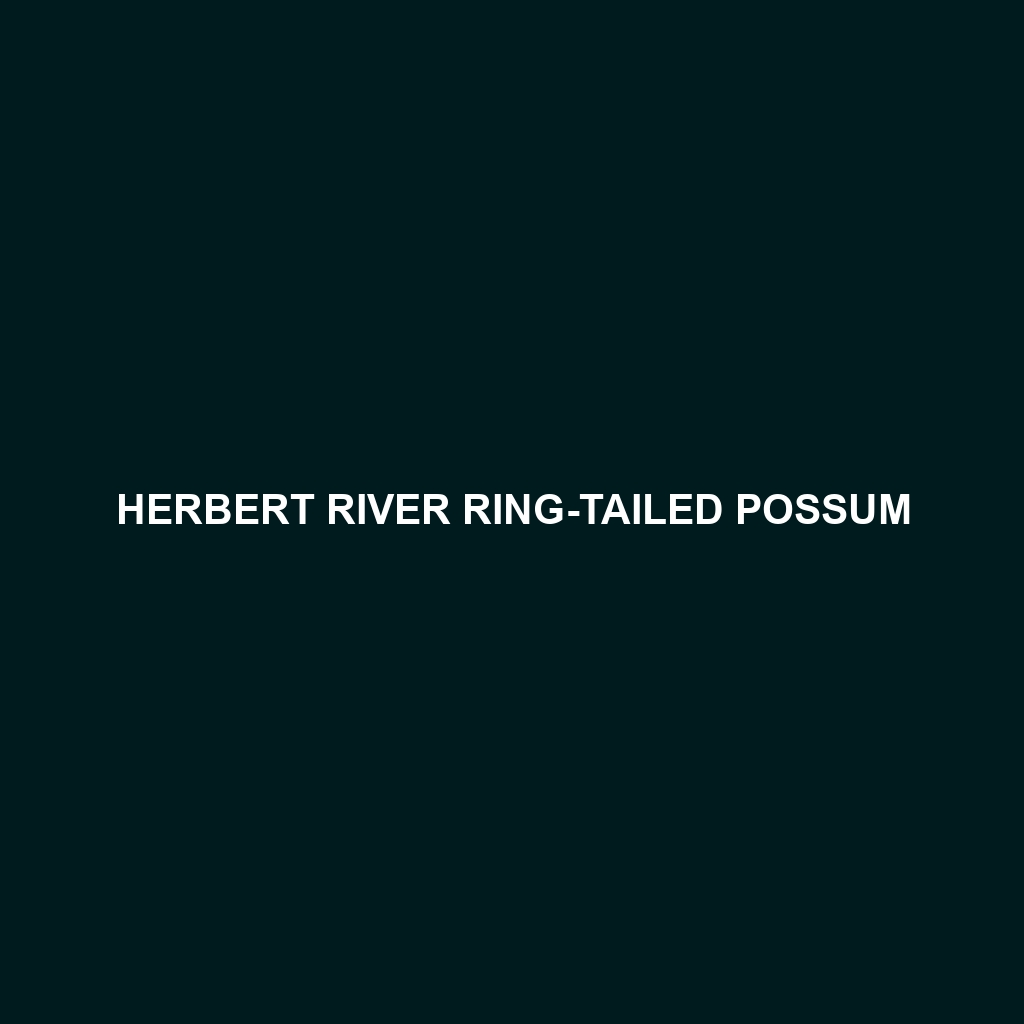Herbert River Ring-tailed Possum: A Comprehensive Guide
The Herbert River Ring-tailed Possum (Pseudochirops archeri) is a captivating marsupial native to the rainforests of northeastern Queensland, Australia. Distinguished by its striking coloration and unique ecological role, this possum exemplifies the rich biodiversity of its region. This detailed description covers the physical characteristics, behaviors, habitat, adaptations, conservation status, and intriguing facts about the Herbert River Ring-tailed Possum.
Physical Characteristics
Size: The Herbert River Ring-tailed Possum is a medium-sized marsupial, with adults typically measuring around 35 to 45 cm (14 to 18 inches) in body length. Their tail adds an additional 30 to 40 cm (12 to 16 inches), making them quite agile in their arboreal habitat.
Coloration: These possums are known for their distinctive fur coloration. They possess a dark brown to black dorsal surface with a contrasting lighter underside. The fur is soft and dense, providing insulation against the cool temperatures of the rainforest canopy.
Special Features: One of the most notable features is their prehensile tail, which is highly adapted for grasping branches and aiding in their arboreal lifestyle. Additionally, their large, forward-facing eyes are well-suited for nocturnal vision, and their sharp claws help them navigate the trees with ease.
Behaviors
Social Interactions: Herbert River Ring-tailed Possums are primarily solitary animals, although they may sometimes be observed in pairs, particularly during the breeding season. They communicate through a series of vocalizations and scent markings.
Feeding Habits: These possums are predominantly folivorous, feeding mainly on a diet of leaves, flowers, and fruits. They have a specialized digestive system to break down the tough cellulose in leaves, making them efficient herbivores in their rainforest ecosystem.
Ecological Roles: As folivores, they play a crucial role in their ecosystem by aiding in seed dispersal and maintaining the health of the forest canopy through selective feeding.
Habitat
Range: The Herbert River Ring-tailed Possum is endemic to the rainforests of northeastern Queensland, particularly the Atherton Tablelands and surrounding areas.
Environment: They thrive in high-altitude rainforests, where the dense canopy provides both food and shelter. These possums are arboreal and spend most of their lives in trees, rarely descending to the ground.
Adaptations
Arboreal Lifestyle: Their prehensile tail and sharp claws are key adaptations for an arboreal lifestyle, allowing them to navigate the complex three-dimensional environment of the rainforest canopy.
Nocturnal Activity: To avoid predators and competition for resources, these possums are nocturnal. Their large eyes and keen sense of hearing help them forage and move about efficiently in the dark.
Digestive Efficiency: Their specialized digestive system allows them to extract maximum nutrients from a diet predominantly composed of leaves, which are generally low in calories and nutrients.
Conservation Status
Threats: The primary threats to the Herbert River Ring-tailed Possum are habitat loss and fragmentation due to logging, agriculture, and urban development. Climate change also poses a risk by altering the rainforest ecosystem.
Conservation Efforts: Conservation efforts include habitat protection and restoration, as well as research to better understand their ecology and behavior. They are currently listed as Near Threatened by the IUCN, highlighting the need for continued conservation actions.
Fun Facts
Name Origin: The species is named after the Herbert River in Queensland, which is part of its natural range.
Tail Dexterity: Their tail is so dexterous that it acts like a fifth limb, giving them remarkable balance and grip while navigating the treetops.
Unique Call: They have a distinctive, low-pitched growl that can be heard at night, helping individuals communicate and establish territory.
In conclusion, the Herbert River Ring-tailed Possum is a remarkable example of Australia’s unique wildlife. Its specialized adaptations, crucial ecological role, and the ongoing efforts to conserve its habitat make it a fascinating subject for study and appreciation. Through increased awareness and conservation initiatives, we can ensure that this enchanting marsupial continues to thrive in its natural rainforest home.
